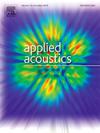基于声发射特性的机械密封摩擦学特性研究
IF 3.4
2区 物理与天体物理
Q1 ACOUSTICS
引用次数: 0
摘要
声发射(AE)已被广泛用于监测机械密封,但对其摩擦学行为的研究仍然很少。本文通过G-W模型和剪切应变能理论探讨了密封界面声发射产生的机理。提出了一种基于自适应变分模态分解(SSA-VMD)参数的自适应信号滤波方法。建立了机械密封试验台,综合摩擦力矩、界面温度和声发射数据进行摩擦行为分析。结果表明,SSA-VMD方法能有效滤除背景噪声,同时保留关键信息。密封系统的结构属性、介质特性、工况等参数对微凸体的真实接触面积和界面处的摩擦系数有显著影响,从而影响摩擦变化。本文章由计算机程序翻译,如有差异,请以英文原文为准。
Investigation of the tribological behaviour of mechanical seals based on acoustic emission characteristics
Acoustic emission (AE) has extensively been employed for monitoring mechanical seals, yet research on their tribological behavior remains sparse. This study investigates the mechanisms behind AE wave generation at the seal interface via the G-W model and shear strain energy theory. An adaptive signal filtering method using Self-Adaptive Variational Mode Decomposition (SSA-VMD) parameters was proposed. A mechanical seal test bench was established, integrating friction torque, interface temperature, and AE data for tribological behavior analysis. Findings reveal that the SSA-VMD method effectively filters out background noise while retaining critical information. Seal system parameters such as structural attributes, medium properties, and operational conditions significantly influence the true contact area of micro-convex body and the friction coefficient at the interface, thereby affecting frictional variations.
求助全文
通过发布文献求助,成功后即可免费获取论文全文。
去求助
来源期刊

Applied Acoustics
物理-声学
CiteScore
7.40
自引率
11.80%
发文量
618
审稿时长
7.5 months
期刊介绍:
Since its launch in 1968, Applied Acoustics has been publishing high quality research papers providing state-of-the-art coverage of research findings for engineers and scientists involved in applications of acoustics in the widest sense.
Applied Acoustics looks not only at recent developments in the understanding of acoustics but also at ways of exploiting that understanding. The Journal aims to encourage the exchange of practical experience through publication and in so doing creates a fund of technological information that can be used for solving related problems. The presentation of information in graphical or tabular form is especially encouraged. If a report of a mathematical development is a necessary part of a paper it is important to ensure that it is there only as an integral part of a practical solution to a problem and is supported by data. Applied Acoustics encourages the exchange of practical experience in the following ways: • Complete Papers • Short Technical Notes • Review Articles; and thereby provides a wealth of technological information that can be used to solve related problems.
Manuscripts that address all fields of applications of acoustics ranging from medicine and NDT to the environment and buildings are welcome.
 求助内容:
求助内容: 应助结果提醒方式:
应助结果提醒方式:


